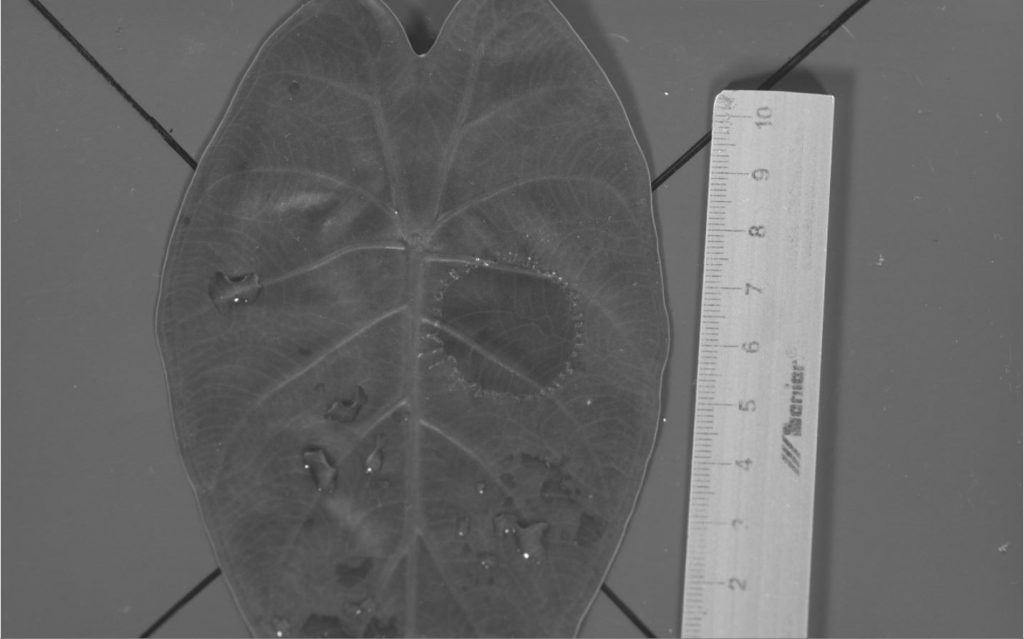Leader: DSc Magdalena Ryżak
Team: PhD Eng Agata Sochan; PhD Eng Michał Beczek; MSc Eng Rafał Mazur
In the environment, the splash of water drops during rainfall is a common phenomenon occurring not only on the surface of the soil but also on the surface of plant leaves.
Depending on the structure and properties of the leaves, the phenomena associated with the impact of water drops may have a different course. The water coming from rain drops can be:
- retained on the surface of the leaves (the phenomenon of interception) in the form of a thin film, thus reducing the supply of precipitation water to the soil. Water retention on the leaf surface has an impact on plant growth and CO2 exchange during photosynthesis, as carbon dioxide passes through water up to 10 000 times slower than through air;
- reflected and torn into smaller droplets as a result of splashing on the leaf surface. Reflection of water can affect the spread of plant diseases, while splashing into smaller droplets facilitates evaporation and affects water circulation in nature.
One of the factors determining the water flow on the leaf surface or its reflection and rupture is the wettability of the surface. The splash on the leaf surface depends both on its properties and on the size and energy of the falling drop.

The aim of this study is to examine the influence of various factors on the course of water splash on the surface of leaves.
This target will be achieved through the following stages:
- initial selection of plants with different leaf wettability,
- determination of leaf wettability on the basis of wetting angle measurements,
- determination of the structure of the leaf surface,
- measurements of the splash of water droplets using high-speed cameras for droplets with different energy and falling on the leaves at different angles.
It is expected that the results obtained in this research task may have a practical dimension in addition to the theoretical aspect. They can be used for research on the spread of plant diseases, leaf fertilization, and plant protection products.












